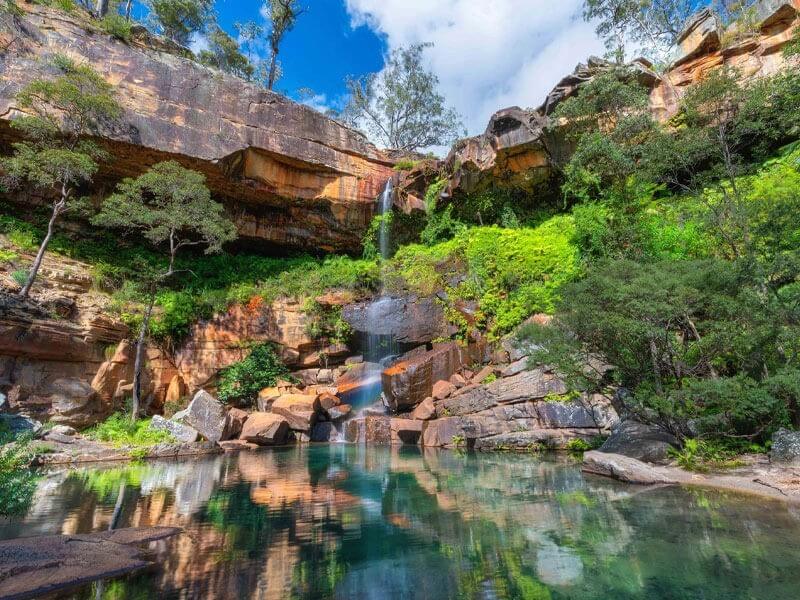Driving down the Hume Highway in the second week in September, it was a reminder to me that September the First is Wattle Day. Little recognised, it has been my preference for celebrating our nation as Australia Day. It is a symbol of renewal, as the wattle flowers, emerging from their nondescript greenery, in which their yellow flamboyance overpowers the landscape. Egg yellow, canary yellow, saffron, burnt yellow – the whole range of this primary colour dominates, and is with green our recognised country’s colours.
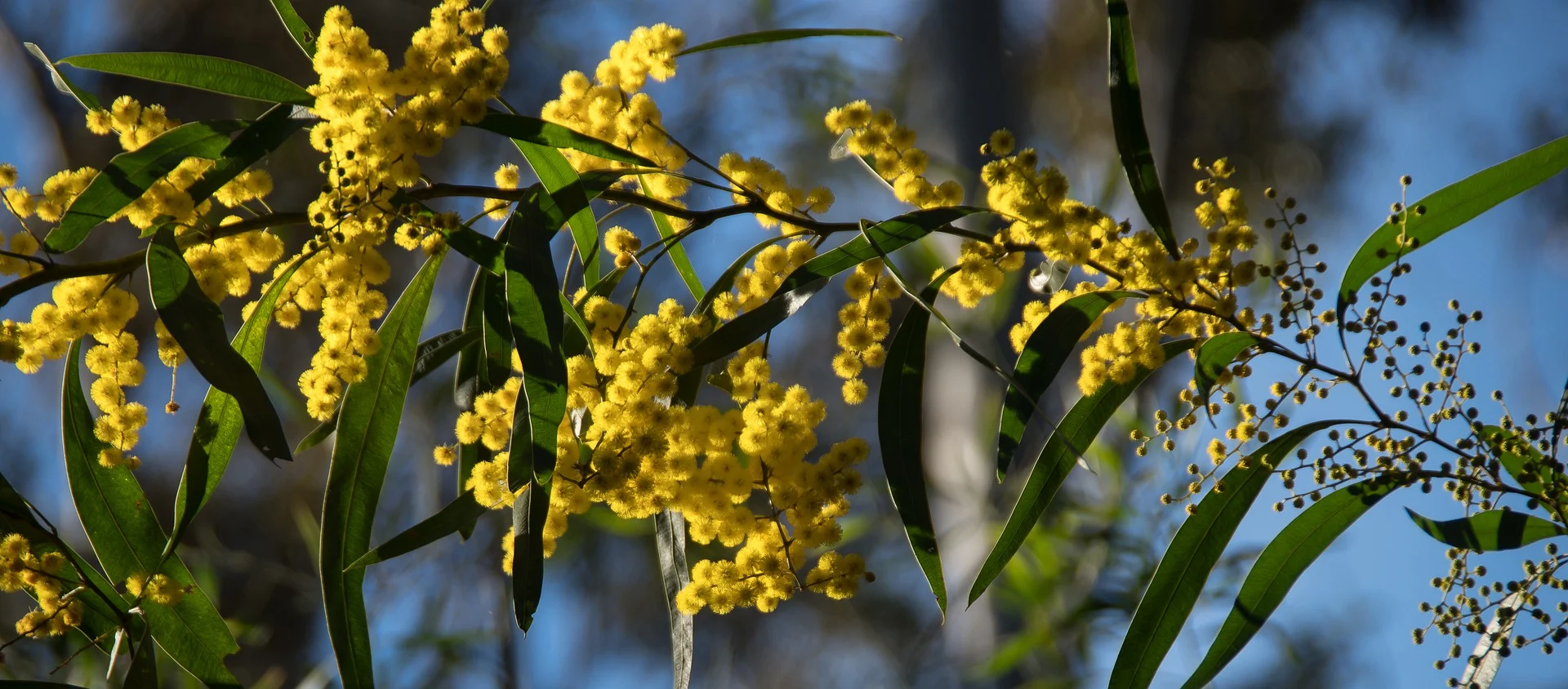
Yet there is the other colour that dominates the landscape but for a few weeks when it is overcome by the wattle efflorescence and that is the blue-green of the eucalyptus, that of the ubiquitous colour of the Blue Mountains seen from a distance.
Our flag, not midnight blue, yet represents the night sky where all other colour is lost in the darkness. The problem with the flag is the blot of the Union Jack – a symbol of how our country has been ripped off by the United Kingdom who sent what they thought as human effluent into a land which they soon viewed as locked into the Stone Age, under the name of New Holland.
Wattle Day converted to Australia Day would be just that stimulus to drive away the negativity in which, whether white fella or blackfella, we have been caught. Sure, celebrate 1 January as Federation Day, with all the mustiness that is projected on that day from the painting of the Duke of York opening Parliament, surrounded by a phalanx of triple-breasted elderly men, frozen in time, in the painting by Tom Roberts.
Consign the current Australia day to being a NSW Welcome to Whitefella Day. When you analyse 26 January, it is really New South Wales Foundation Day. When I was a child, Australia Day barely registered apart from signifying the end of the summer holidays and back to work, after a long weekend. January 26 may or may not have been incorporated in those long weekend dates. Australia Day itself was a very low key celebration.
But I am a revolutionary in regard to celebration. What with giving Chuck the boot, and substituting Matilda Day for that bizarre King’s Birthday celebration, when it is not his birthday. I have advocated that previously, but who is listening?
Overall, a better fit, but let’s face it, a holiday is a holiday – and for most Australians they wouldn’t care if the government established a holiday to celebrate The Drover’s Dog. Content would not matter. The business community would pluck a figure out of the air and say how much Australia would be losing in production, and for most Australians it would be just another day, while the media would beat it up showing dignitaries laying wreaths for the Unknown Dog or every bloody dog known being paraded as part of the endless media cycle to win the National Canine Cup.
Biden – Why?
Trump’s probable path to actual victory is via a slender electoral vote majority, with less than a majority of the popular vote, quite possibly aided by a third-party drain on Biden’s votes. Trump might indeed arrive at his swearing-in on Jan. 20, 2025, having been convicted, still facing trial in other cases — or both. And he would owe his political survival to religious fundamentalists and right-wing nationalists, who would staff key positions in his government.
When I read the above, the fact is that if the Democrats could produce a candidate rather than an octogenarian, who is a known plagiarist and hence a person so bereft of ideas but duplicitous enough to hijack other people’s ideas without attribution, then it is not surprising that Trump is still in the race. I do not believe that America is a land with a sizeable minority of fundamentalists and right wing nationalists enough to give Trump a second term if his opponent was not Biden.
 Biden may still have his marbles, but it is the presentation. His face is a mask. An engaging smile is offset by a pale face under a wispy white thatch and hooded eyes where, as he walks, he dodders. He tries hard to appear younger, but he is 80 and it is inconceivable that he could withstand the decapitation of America, the climate tempest which is intensifying and the madness of Vladimir Putin. And then there is his son, unfair as the accusations may be, Hunter Biden is being weaponised.
Biden may still have his marbles, but it is the presentation. His face is a mask. An engaging smile is offset by a pale face under a wispy white thatch and hooded eyes where, as he walks, he dodders. He tries hard to appear younger, but he is 80 and it is inconceivable that he could withstand the decapitation of America, the climate tempest which is intensifying and the madness of Vladimir Putin. And then there is his son, unfair as the accusations may be, Hunter Biden is being weaponised.
So, to Biden, I think you should look at yourself and in the mirror there is a selfish old man. You the man, who catapulted Clarence Thomas into the Supreme Court by a sexist demolition of Anita Hill. Judgement appalling. Has it improved?
Go, gracefully.
The problem is finding a Biden replacement at short notice. For all her good intentions, the Vice-president has not set world alight. But as I wrote in 2020, Amy Klobucher, Senator from Minnesota, was my personal choice. To which I now add Gretchen Widmer, the Governor of Michigan. Both would withstand the bluster of Trump, but I wonder whether America is ready for a woman President.
If they are, either of these women would make very good Presidents, but then I am a long way away – and perhaps too prejudiced, unable to abide Biden, but objective enough to believe this current President is just too old. That is the overwhelming problem given that it will soon be impossible to change. Thus, the choice of the Vice-Presidential candidate will be crucial, even if unfair perception of senility propagated by Trump does not render Biden prematurely dead.
Once upon a Time along the Dawson
Records of the Yiman mainly concern the Hornet Bank massacre which took place on 27 October 1857. The incident took at a site known as “Goongarry” which had been squatted by the Scottish immigrant Andrew Scott who had applied for a tender over this area of Yiman traditional land in late 1853. It has been assumed, on the basis of settler practice, that Scott had occupied this stretch of territory at least a year before that date.
Though Scott’s tender was approved four years later, he leased the property to a shipwright John Fraser in March 1854. Fraser died later that year of pneumonia, and the lease was continued by his wife, 5 sons and 4 daughters, who, disregarding Scott’s advice not to allow blacks anywhere near the holding, befriended the local Yiman, since they had experience earlier of friendly Aboriginal workers on various stations on the Darling Downs. The family also employed a tutor Mr. Neagle. According to the account of the sole survivor Sylvester Fraser who managed to hide after being skulled by a nulla nulla, they had been attacked either at dawn or according to other accounts just as the full moon rose, by roughly 100 tribesmen. The three oldest girls were raped before being killed – Wikipedia
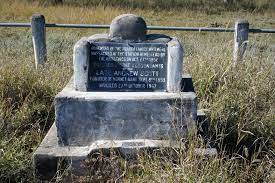 The Dawson River, confluent with the Upper Dawson River, is a waterway that runs through Jiman Country, where the infamous Hornet Bank Massacre took place in 1857. The marking of this historical event, the Hornet Bank Massacre, does not memorialise the deaths of hundreds of Jiman people but rather refers to the deaths of eleven settlers and one displaced Indigenous man who were occupying Jiman Country at that time without local permission. The word massacre in the title of this historicised event, all its capitalisation, attempts to silence the other story of murdered men, raped women, stolen children, poisoned dogs, and all the pain of the white violence that preceded and followed this inevitable confrontation.
The Dawson River, confluent with the Upper Dawson River, is a waterway that runs through Jiman Country, where the infamous Hornet Bank Massacre took place in 1857. The marking of this historical event, the Hornet Bank Massacre, does not memorialise the deaths of hundreds of Jiman people but rather refers to the deaths of eleven settlers and one displaced Indigenous man who were occupying Jiman Country at that time without local permission. The word massacre in the title of this historicised event, all its capitalisation, attempts to silence the other story of murdered men, raped women, stolen children, poisoned dogs, and all the pain of the white violence that preceded and followed this inevitable confrontation.
Marcia Langton, one of this country’s most revered and respected scholars and activists, has Yiman sovereignty. She has spoken of the ‘horror stories’ carved into the recent generations of her ancestry and has taken her family to Yiman Country to see the graves of her executed ancestors. Her grandfather ‘belonged to the Yiman people’ and was born ‘on the banks of the Upper Dawson River. This is far too close for comfort. – Sue Pike University of Melbourne (Pike uses both Jiman and Yiman to describe the one mob)
The first excerpt above is easily accessed. It is the Wikipedia account. The second is less public. Pike seems to epitomise some Aboriginal academics brushing over the Fraser family massacre. Other murders had taken place earlier by the Yiman; for instance, one Mr. McLaren of Isla and Waterton, as reported was “waddied” to death on Kinnoul, a property near Taroom on the Dawson River, in the winter of 1854. Shepherds were often attacked, but no details were appended.
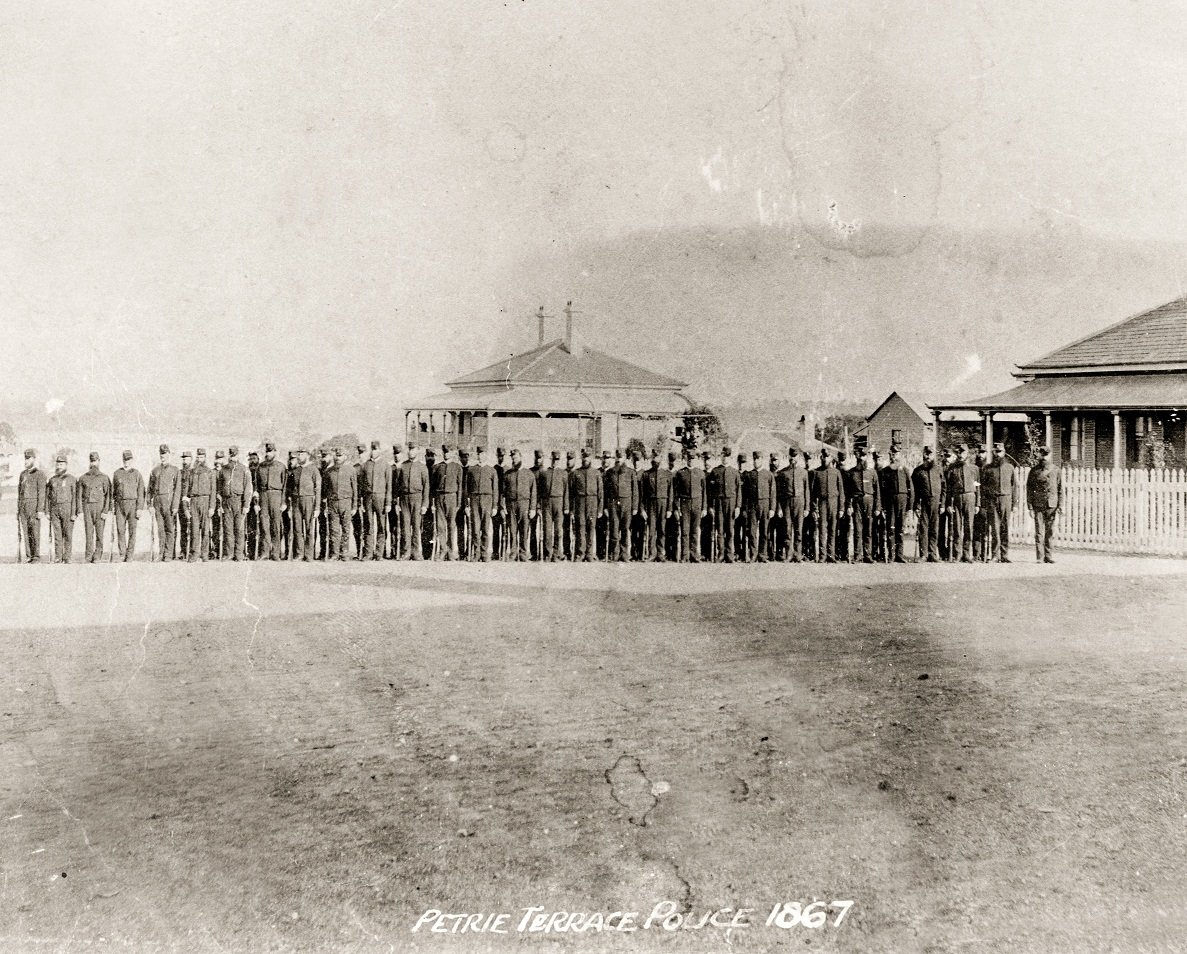
Now Marcia Langton, the truth teller, is part Yiman, according to her often-stated affirmation of heritage. She has been saying her ancestors were massacred, but she does not identify the role of the native troopers in these massacres, which occurred over the next twenty-three years, until the Yiman culture was wiped out. The numbers are immaterial, the Yiman culture was destroyed. But not without a fight, in the end unequal that it may have been.
Remnants of the Yiman did survive and in 1998, they filed an application with the National Native Title Tribunal (NNTT) for recognition of native title to an area of approximately 14,020 km2 about 75 kilometres north-east of Roma.
The case was concluded in 2016 when Mr Justice John Reeves of the Federal Court, sitting in Taroom, approved a consent decree. The judge said that the court order did not grant the Iman native title; instead, it recognised their pre-existing title; and their continuing connection to the land, despite its being 150 years since they were forced into hiding.
The Dawson River arises in the Carnarvon Range in Central Queensland, where there is a wall of images. Frankly, I felt uncomfortable walking along beside the wall, because I felt I was intruding on women’s business. I interpreted the images as a birth register of the local people whose land abutted that of the Yiman.
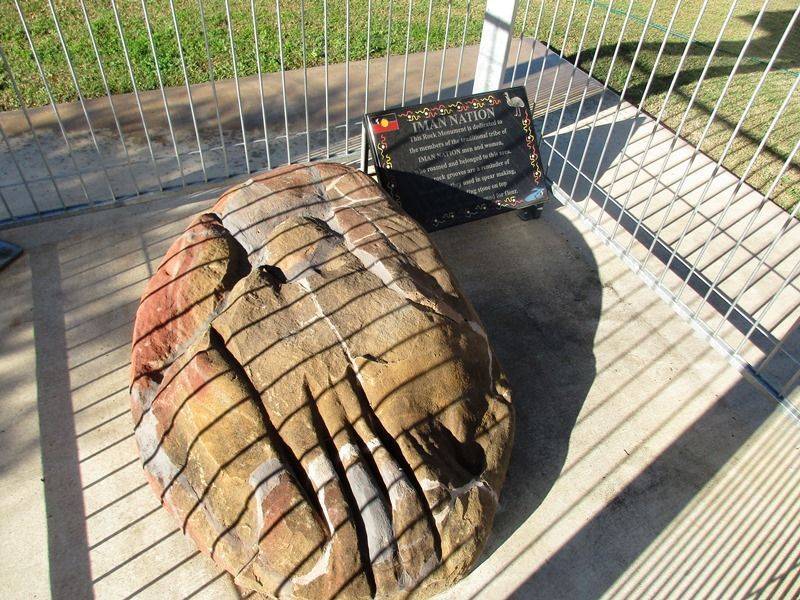 There were no custodians there when we visited some twenty years ago. The Dawson River flows into the Fitzroy River, containing a wide variety of fish, including barramundi and the occasional crocodile. The Dawson River is lined by Dawson palms which are found nowhere else. We passed through Taroom, but we could not remember seeing the memorial on the Leichhardt Highway to the Yiman. This is a rock where there are cuts to represent spear cuts and on the top of which is a replica of a grindstone for seeds.
There were no custodians there when we visited some twenty years ago. The Dawson River flows into the Fitzroy River, containing a wide variety of fish, including barramundi and the occasional crocodile. The Dawson River is lined by Dawson palms which are found nowhere else. We passed through Taroom, but we could not remember seeing the memorial on the Leichhardt Highway to the Yiman. This is a rock where there are cuts to represent spear cuts and on the top of which is a replica of a grindstone for seeds.
And lest we forget, there is a small memorial to the Fraser Family alongside the Hornet Bank Rd near Taroom.
The next episode in this Aboriginal saga is the entry of David Marr, whose latest book is due to be published in early October, The Killing for Country. Apparently, David is horrified that his ancestors were involved in the killing of Aboriginals, but from the blurb, I’m not sure to which of the culprits he is referring. It will be interesting to see whether he ascribes to the Yiman as being a warrior tribe feared by other Aboriginals.
Looking over the sites where David Marr is visiting to promote his book, Taroom is not one of these. However, Forest Lodge, Bowral, and Eltham figure strongly – and of course, Maleny in Queensland. Says something about the constituency.
Remembering Theodore
When one mentions places like Taroom and the Dawson River, you need to also mention they are tucked away in Central Queensland, and for those living south of the Queensland border, they are in a virtually unknown but beautiful part of Australia when not beset by drought or flooding rain.
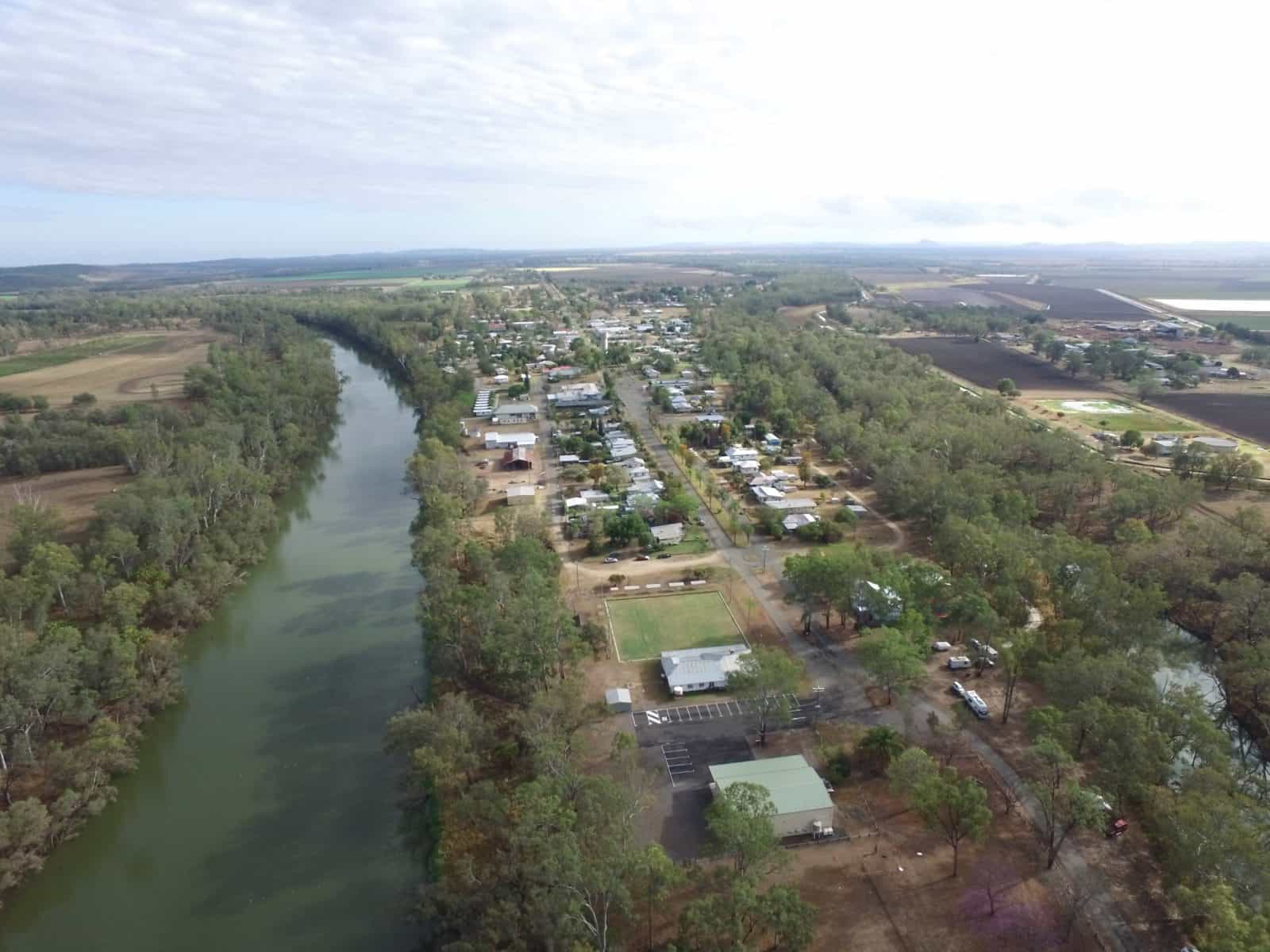
There is Theodore downstream from Taroom. Theodore is described as a special place because with Dawson palms in the main street, the township is said to have the appearance of a tropical town even though it is well south of the Tropic of Capricorn.
Theodore is named after Ted Theodore, variously Queensland Premier and Federal Treasurer in the Scullin Government. He was involved in a number of murky dealings, in which his association with Jack Wren was a prominent feature.
Theodore was also linked with an irrigation project in the Dawson Valley which failed in the early 1920’s, nevertheless the reason for the existence of the township.
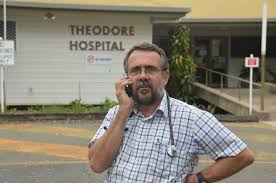
I have been to Theodore, the former redoubt of Dr Bruce Chater, when I visited him twenty years ago. Since that time the Dawson River had flooded Theodore in 2010, but the township seems to have recovered, albeit with a few scars. Watching a documentary made ten years later that seemed to be the feeling.
The township of about 500 people had been totally evacuated, the first Queensland township for this ever to occur. The natural constriction of the river, coupled with Theodore being located where Castle Creek drains into the Dawson, means that there is a one per cent chance of the 2010 experience re-occurring each year.
It is unusual to have a doctor in a town that small, but Bruce was one of those traditional doctors who sustain the myth that a doctor can do anything, from emergency treatment, delivering babies and then looking after the child as he or she progresses through all the ages, so eloquently characterised by Shakespeare.
Bruce maintained his practice by judicious use of general practice registrars, and when I was there, two female medical students had just arrived. Bruce and his wife, Anne, ran a very efficient country practice and Bruce sold himself very well as the archetypical rural medical practitioner.
Queensland is the spiritual home of the rural doctors, and the impetus for a separate rural doctors’ association came from there and, coupled with the establishment of a medical school at Townsville located within James Cook University, gave rural medicine a substantial amount of intellectual capital, which inter alia led to the recognition of the rural medical generalist program.
While the main driver of this whole field of rural medicine can be attributed to the genius of Ian Wronski, it was important that there were exemplars of “country medical practice”; and undoubtedly Bruce Chater was one of these.
The problem Bruce Chater seems to have conquered is succession planning, having recruited his successor, Elizabeth Clarkson, who incidentally was born in the nearby town of Moura, and commenced as Bruce Chater’s replacement in 2021. Even so, Bruce stills seems to have a presence in the town.
I’m not sure whether this doctor who succeeds him will be prepared to sink thirty to forty years of her life into one small township, no matter how congenial the lifestyle. Bruce made an interesting comment that his practice was well served by having 2.5 full time equivalent (FTE) doctors; his ideal being three. Now that is what I call “congenial”.
Bruce has been always the optimist; he never bewailed the problems of rural practice. Being optimistic, talking up the value of his practice is a far better recruitment strategy than his peers, who always emphasised the inability of recruiting anyone – the “we’ll all be rooned” syndrome.
That is the bugbear of rural practice – maintaining continuity, avoiding the locum trap (in that the practice becomes so fragile as being only staffed by the “fly-in-fly-out” doctors); only countered with long term succession planning.
Thus, following the fate of the Theodore practice over the next decade will be fascinating.
Hoping it Pans Out
When you live with a debilitating bowel condition, you must cope with chronic pain and bouts of diarrhea among a plethora of physical symptoms. Then there’s the emotional afflictions, chief among them is what I call toilet anxiety.
I’ve had it since I was diagnosed with severe ulcerative colitis a few years ago. Whenever I go to a new place, I must know right away where the nearest restroom is. Or worse, I avoid going out entirely for fear that a flare-up will surprise me on the road.
This above was cri de coeur of a correspondent in The Washington Post.
In the United States, public toilets are hard to find with only eight public toilets for every 100,000 people. But it varies widely from Wyoming which has 44 toilet facilities to Louisiana and Mississippi only one for 100,000. By contrast, Australia has 37 toilets for 100,000 people but, as I found out one day, that statistic means nothing when the public toilet is difficult to find, or below ground or up steep stairs – for a disabled person it may as well not be there. That is a perennial problem of old buildings, pre-dating the days before sewered toilets, when the toilet was an add-on in many of these buildings, and hence awkward to use for the disabled.
There have been innovations in making public toilets more user friendly, but setting time limits on their use is not conducive. Unfortunately, in our world of privileged Captain’s Clubs and the like, the requirement for public manifestations of these private facilities has received minimal attention, particularly in the urban setting. Try finding an accessible public toilet that does not require stairs in any city.
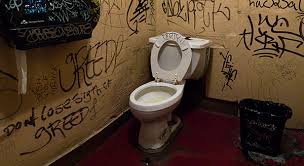 I remember needing to find a public toilet in a rural Alabama town. I eventually found one, but it was locked. I made it to McDonald’s who kindly allowed me to use their rest room but let me say it seemed not have been recently cleaned – like a year. The graffiti on the walls and door were as depressingly similar, as that found I suspect everywhere in this forgotten land of public responsibility around the world.
I remember needing to find a public toilet in a rural Alabama town. I eventually found one, but it was locked. I made it to McDonald’s who kindly allowed me to use their rest room but let me say it seemed not have been recently cleaned – like a year. The graffiti on the walls and door were as depressingly similar, as that found I suspect everywhere in this forgotten land of public responsibility around the world.
Time for this simple requirement for accessible toilets to be incorporated in national policy, and I’m serious.
Mouse Whisper
They were travelling along the Carnarvon Highway and said to be near the small township of Injune. The Highway was clear; night was approaching and they needed to get to Carnarvon Gorge where they staying. So she uncharacteristically accelerated beyond the 110 speed limit. Quite considerably as she recalled; and horror of horrors, up ahead was a policeman flagging her down. She feared the worst because the speed she was doing could attract harsh penalties. Slowing down, working through the excuses, she stopped.
The policeman appeared at the window. Not the slightest bit interested in her speed. Instead of the suspected speeding infringement notice, he just wanted to do an alcohol “breath test”. He was behind in fulfilling his monthly quota and was trying to catch up.
The policeman thanked her after the reading was recorded as negative. She drove off after thanking him too.
They reached Carnarvon Gorge just after dark, the signs of relief still on her face.
